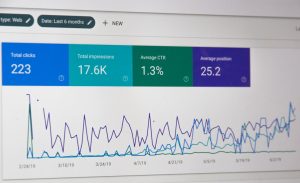How AI Convert HTML to WordPress Tools Are Revolutionizing Web Development
5 min read
For years, developers have manually coded websites from scratch using HTML and CSS, then painstakingly adapted them into dynamic CMS platforms like WordPress. The process, though rewarding, was often time-consuming, required constant updates, and demanded proficiency in multiple web development languages. Today, thanks to advancements in artificial intelligence (AI), this landscape is shifting dramatically. One of the most important innovations in this space is the emergence of AI-powered tools that convert static HTML pages into dynamic WordPress themes. These automated tools are revolutionizing how developers work, streamlining complex tasks, and opening new possibilities for non-coders.
The Traditional HTML to WordPress Workflow
Before diving into how AI is transforming the process, it is helpful to understand what the traditional HTML to WordPress workflow involves:
- Hand-coding PHP templates: Developers generally sling large chunks of PHP to translate static HTML into WordPress’s dynamic templating engine.
- Creating WordPress themes: This requires breaking down the HTML structure into parts like header, footer, sidebar, index, and single post templates.
- Integrating WordPress functions: This includes embedding WordPress functions and loops to ensure content is dynamically retrieved.
- Setting up custom post types and fields: For more complex sites, developers might create advanced custom structures to organize content.
This process could take anywhere from a few days to several weeks depending on the complexity of the site. However, as with most manual processes, it was ripe for disruption.
Enter the Era of AI Conversion Tools
AI-powered tools are making it possible to automate much of the HTML to WordPress conversion process. These tools use machine learning algorithms, natural language processing, and code recognition to analyze static HTML and automatically output fully functional WordPress themes. This is nothing short of a revolution.

The process often includes:
- Analyzing page structure: AI algorithms can interpret the DOM hierarchy of HTML files, identifying reusable components like headers, navbars, and footers.
- Creating dynamic templates: Based on the HTML structure, the AI can create WordPress-compatible template files such as
header.php,footer.php,index.php, and more. - Inferring content placement: The tools detect which sections should be dynamically pulled from WordPress’s database and embed appropriate WordPress loop functions.
- Generating WordPress functions and hooks: The AI system adds built-in WordPress functionalities such as widgets, menus, and custom post types automatically.
Popular AI-Based HTML to WordPress Tools
Several platforms and tools are already leveraging AI to automate HTML to WordPress conversions. Here are a few noteworthy examples:
1. Elementor AI
Elementor, one of the most popular WordPress page builder plugins, recently introduced AI functionalities that incorporate static HTML elements and convert them into editable blocks within its visual editor. This means users can paste chunks of HTML, and the system will interpret layout and styling with surprising accuracy.
2. TeleportHQ
TeleportHQ is more than just a static to dynamic converter—it’s a complete code-generation platform. With AI features, it can interpret user interface design from HTML (or even design files like Figma) and generate WordPress-ready components.
3. Pinegrow AI Assistant
Pinegrow has a powerful AI assistant that allows users to convert HTML files into an interactive WordPress theme right within its editor. It identifies editable zones and proposes where to inject WordPress functions, making customization easier than ever.
Key Benefits of AI-Based Conversion Tools
By adopting AI-powered HTML to WordPress conversion tools, developers and designers are gaining a number of important benefits:
- Speeds up development: What used to take days or weeks now takes hours, dramatically reducing the time-to-market for websites.
- Reduces human error: Automated code generation ensures fewer bugs in the output.
- Improves accessibility: With AI tools, even non-technical users can create and manage sophisticated WordPress sites.
- Facilitates rapid prototyping: Designers can test web ideas quickly by converting static mockups into working WordPress sites within minutes.
- Empowers small businesses: Small businesses with limited budgets can now afford high-quality WordPress sites without hiring a full development team.
Challenges and Limitations
While AI tools are transforming the web development game, they are not without limitations. Understanding these can help developers decide when it’s appropriate to use AI and when to rely on traditional methods.
- Complex logic implementation: Websites requiring complex conditional logic or custom functionality may still need human intervention.
- Design accuracy: Some tools might misinterpret design nuances or fail to apply style classes exactly as needed.
- Security concerns: Automatically generated code may not always follow best security practices, making it critical to review and sanitize output.
- Plugin compatibility: Ensuring the outputs work flawlessly with WordPress plugins and themes sometimes needs manual tweaking.
Nonetheless, these limitations are being addressed rapidly as AI models receive more training data and feedback loops from users.
The Future of AI in WordPress Development
AI is poised to redefine not just HTML to WordPress conversion, but every stage of web development. As AI models become more sophisticated, we might see the rise of end-to-end web development platforms powered entirely by artificial intelligence. From initial concept sketches to fully-functioning eCommerce stores, websites could be built and launched within hours.

Moreover, open-source communities are getting involved. WordPress plugins with AI capabilities are now being developed collaboratively, ensuring transparency and security while pushing the boundaries of what’s possible.
As a case in point, some platforms are experimenting with AI that not only converts but also optimizes HTML content—automatically implementing SEO best practices, responsive layouts, and accessibility features during the conversion process. This kind of intelligent automation could ensure that even the most basic websites are up to modern standards, without extra effort from the developers.
Conclusion
The days of labor-intensive HTML to WordPress conversions are quickly dwindling, thanks to the emergence of powerful AI tools. These solutions act as a bridge between static design and dynamic content management, enabling both seasoned developers and beginners to work faster, smarter, and more creatively. By addressing both efficiency and accessibility, AI isn’t just enhancing the way we build websites—it’s democratizing it.
Web development is moving toward a future where creative intent is enough, and the technical implementation is handled by intelligent systems. In this world, the barriers to web presence are coming down, making space for a digital landscape enriched with innovation, inclusivity, and agility.



